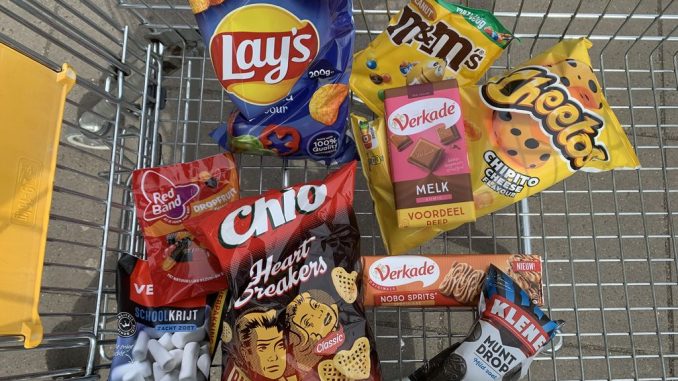
Understanding the Trends of A-brands in Supermarket Sales
Supermarkets saw a peculiar trend in the A-brands spread across their shelves last year. It appears that though there was a cumulative increase in the overall A-brands’ turnover, less quantity was actually sold. The cause? A rise to stardom among the house brands and increased prices for A-brands.
Are We Paying More for Less?
Market research firm Circana provided some interesting findings regarding this trend. According to their data, A-brands’ turnover increase resulted predominantly from raised prices. Nowhere was this more evident than the sweet indulgences of our day – chocolate, cookies, and chips. Here, not only did we see the prices surge, but also a downsizing in the packaging. This practice, dubbed shrinkflation, surprisingly increased sales for these “pampering products”. Taking Venco’s school chalk as an example, Circana noted, “It was a 260-grams package priced at €2.19. Now, the price remains unchanged, but the package contains only 225 grams.” Several other cases showed this hidden price increase contributing to the popularity and turnover of A-brands in the top 100. For instance, Ola’s Viennetta ice cream strain net weight is now 100 grams less, a bag of Lay’s paprika chips went down by 35 grams, and several Red Band packages contained fewer sweets. “In all these examples, the price either remained the same or increased,” observed Sjanny van Beekveld, a Circana researcher.
Manufacturer’s Perspective on This Trend
When asked about their approach to contraction inflation, Lay’s and Venco did not respond. However, Unilever, the maker of Ola ice cream, offers an insight into the issue. “The prices of raw materials, logistics, energy, packaging, and wages have risen immensely. To offset this, we either suggest higher prices or reduce package sizes. This enables us to keep our products within reach of consumers, particularly those with a tight budget.” The Consumers’ Association conducted a study in 2020 that revealed shrinkflation to be a significant nuisance for consumers. However, trade associations of manufacturers and supermarkets were not inclined to transparency regarding the phenomenon at the time. The trend, nonetheless, seems to have diminished, according to recent observations by the Consumer’s Association.
A-brands Versus Private Labels
By 2023, private labels are expected to continue making ground against the 100 most popular A-brands. Private labels’ market share rose to nearly 22% of total supermarket turnover, up from 24.6% in 2004. Although this seems like a small margin to a casual observer, it represents a staggering €1.5 billion that A-brands have lost in terms of turnover over those years. Several A-brands noticed a sales decline, like Heineken, Douwe Egberts, Nescafé, and Becel. Although the past year didn’t fare well for A-brands in general, they still managed to pull off a turnover growth of 4.8% – thanks to price hikes and not additional sales. Circana researchers suggest that innovation is the key for A-brands hoping to regain their footing. For example, Remia, a sauce brand, sold more plant-based mayo last year, as did their competitor, Zaanse. Flavored mayonnaises like curry or pesto also saw a surge in sale
What the Future Holds for A-brands
The year 2021 is set to herald a considerable shift in the A-brands’ landscape. From June 1, supermarkets will no longer be allowed to sell cigarettes, consequently leading to the disappearance of ten cigarette brands from the top 100 A-brands’ list. Brands such as Vivera, Nivea, Liga, and Nutella that are currently just outside the top 100 can likely replace these. Forecasts suggest that Coca-Cola is likely to succeed Marlboro and Camel to become the most sold A-brand in Dutch supermarkets moving forward.

Be the first to comment